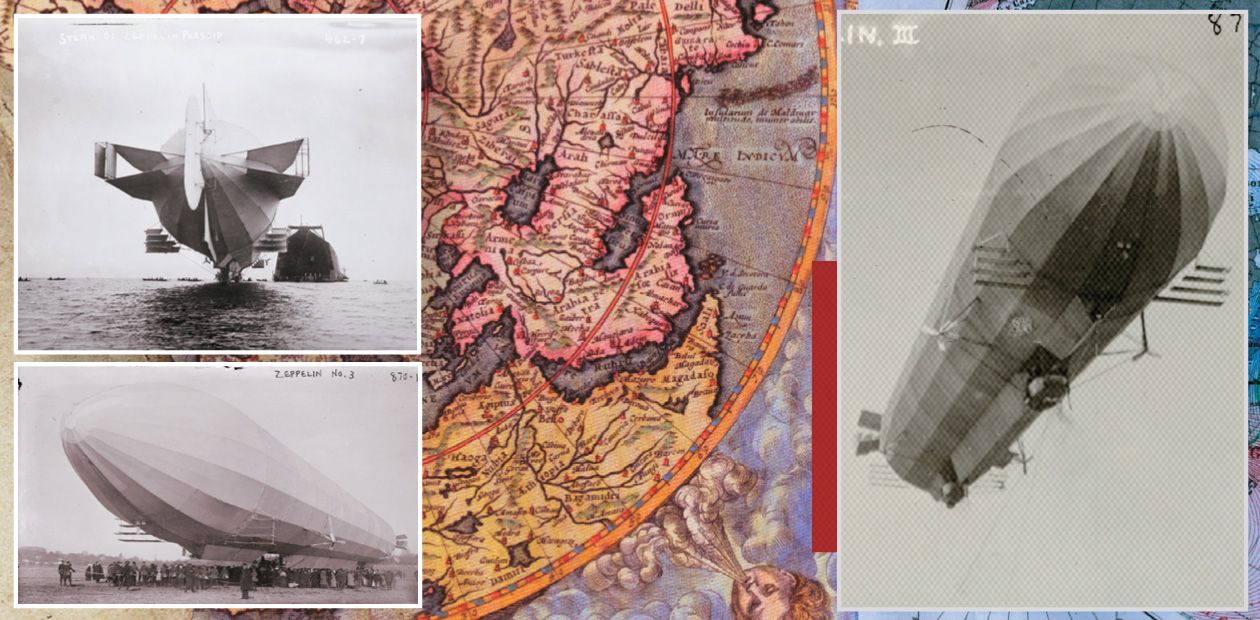To the Arctic in a Balloon
Revisiting the history of the Aeroarctic Society and the Polar Commission of the USSR Academy of Sciences
Aeroarctic, or the International Society for the Exploration of the Arctic Regions by Means of the Airship, was founded in Berlin in 1924. It existed only a little longer than a decade to fall victim of Adolf Hitler’s political ambition. However, the society’s activities had a big impact on the advancement of scientific exploration of Polar regions and the international cooperation between scientists, including between Soviet scientists and those who emigrated from Russia after the events of 1917.
The practical results include the well-known flight of the LZ 127 airship over the Arctic in 1931. There are still a lot of blank spots in the history of this flight, seemingly well-known and well-described in scientific and popular literature, and this story calls for a special consideration. However, this article focuses on the events preceding the foundation of the Aeroarctic Society and on the first years of its existence. Importantly, the society’s activities proved to be connected to those of the Polar Commission of the USSR Academy of Sciences and its most active representatives
There are different ways the full name of Die Aeroarctic is translated into other languages, including into English, in scientific and popular literature. For instance, it is often translated as the International Society for the Exploration of the Arctic Regions by Means of Aircraft. However, aircraft is a generic term for air vehicles, both airships and flying machines, whereas the Aeroarctic intended to use only airships in their expeditions. This idea is better conveyed by the name the ‘‘International Society for the Exploration of the Arctic by Means of the Airship’’. This name was used by Inokenty Tolmachoff, an Arctic explorer and an official of the Aeroarctic Society, in the title of his article published in Science magazine in 1928: The International Society for the Exploration of the Arctic by Means of the Airship (Aeroarctic) (Science, 1928. V. 67, N. 1736, pp. 363). Moreover, Tolmachoff wrote his letters to Leonid Breitfuß on paper with the letterhead of the American branch of the Aeroarctic, which used the same English translation of the society’s name. This name better reflects the very idea of the Aeroarctic Society as well as the materials and ideas presented in my article in SCIENCE First Hand.
On December 4, 1924, at a meeting of the Danish Aeronautical Society in Copenhagen, one of the speakers addressed the audience believing it was a challenge for him to speak to people interested primarily in the development of transport communications by means of flying machines. He believed that the airship was not a dangerous rival to the airplane, and he would be happy to prove that. The globe was large enough for both kinds of air communications. The airship could only compete with the steamship, for where the express train or the airplane could operate successfully, the airship, whose main task was transoceanic and, in some cases, cross-continental communications, would have no economic success. This speaker was captain Walter Bruns (1889–1955).
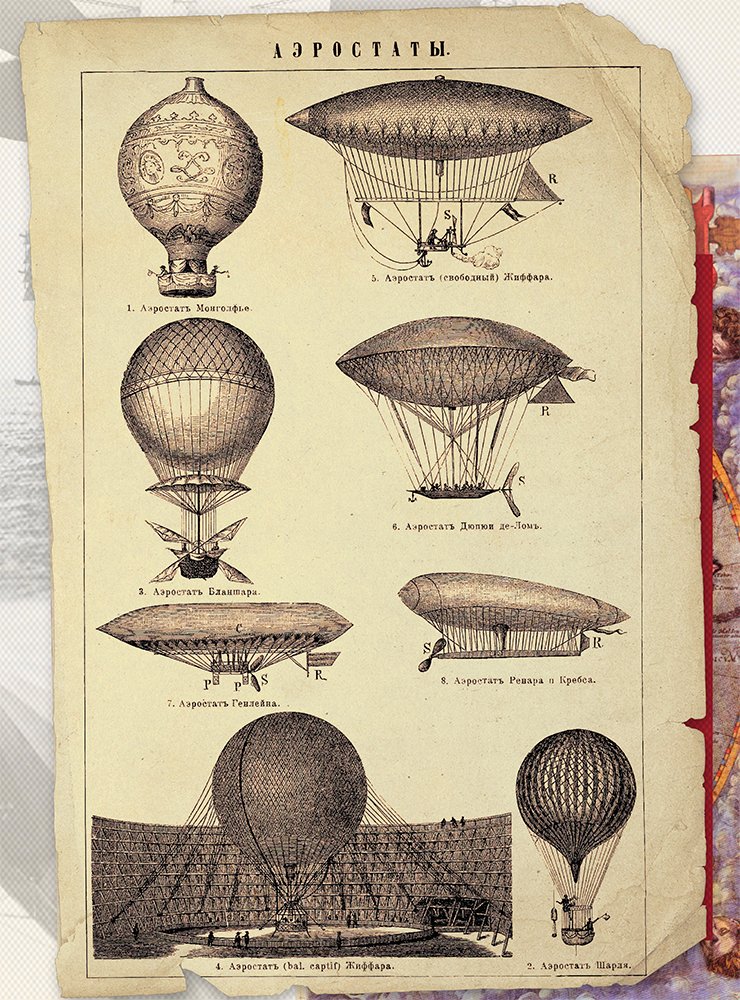
The aerostat (or balloon, which is a more simplistic and not entirely accurately term) is a flying vehicle that uses the buoyant force of the enclosed gas (or hot air) with a density less than that of the ambient air (Archimedes’ law).
There are unpowered tethered and free-flying aerostats and powered aerostats, or dirigibles.
Aerostats can be filled with gas (Charlieres), hot air (Montgolfieres) or a combination of gas and hot air (Rosieres). Charlieres were usually filled with hydrogen and (rarely) coal gas; however, since these gases are combustible and their mixtures with air are explosive, additional precautions were required. The inert gas helium has no such disadvantage, which is why it was also used in Charlieres. However, helium was expensive and not everyone could afford it.
The dirigible (from the French dirigeable, which means steerable) is essentially a combination of an aerostat with a propeller engine or internal combustion engine and a steering system (steering wheels) enabling the dirigible to move in any direction regardless of air flows
As the story unfolds, we will get to the details of this event, but first I would like to draw your attention to the aeronautics terminology of that time. The word airship did not mean any air vehicle. By that time, one had invented and put into use various aerostats, helicopters, airplanes, etc. There were scientific terms for them, but in everyday speech they were called in association with their defining features. Thus, airplanes were called flying machines. The word airship was used for an aerostat and, specifically, dirigible, likely because the latter most resembled a cruise ship or an ocean liner in terms of load capacity, comfort and travel range.
That is why Captain Walter Bruns pointed out, in his address at a meeting of the Aeronautical Society in Copenhagen, where he emphasized the advantages of airships, that the dirigible would not be able to compete with airplanes or railways. The International Society for the Exploration of the Arctic Regions by Means of the Airship, the organization discussed in this article, intended to use dirigibles in its activities.
Unexplored Arctic
Aeroarctic, or the International Society for the Exploration of the Arctic Regions by Means of the Airship, was founded in Berlin in 1924. It existed only a little longer than a decade to fall victim of Adolf Hitler’s political ambition. However, the activities of the Aeroarctic had a big impact on the advancement of scientific exploration of polar regions and the international cooperation between scientists, including between Soviet scientists and those who emigrated from Russia after the events of 1917. The practical results include the well-known flight of the LZ 127 airship over the Arctic in 1931. There are still a lot of blank spots in the history of this flight, seemingly well-known and well-described in scientific and popular literature, and this story calls for a special consideration.
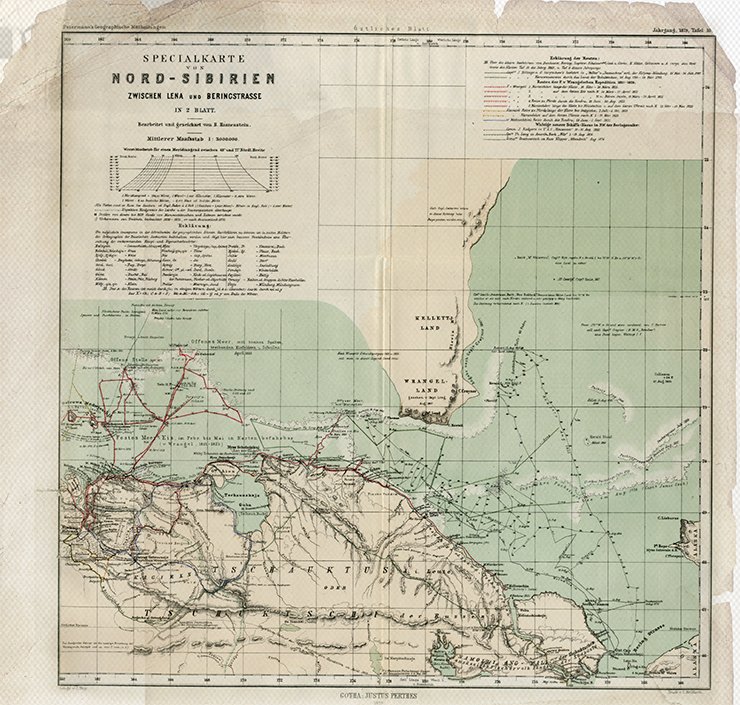
The end of the 19th century and the first third of the 20th century marked a peak of interest in the Arctic. This interest was both scientific and pragmatic, often associated with the achievement of political goals. By the early 1920s, there had been a lot of expeditions and journeys to the Arctic. However, much of this vast space remained unexplored. In 2013, scientific community marked 100 years since the discovery of the Severnaya Zemlya archipelago (the mariners who discovered the archipelago named it Tai Vai after the names of the expedition ships—Taimyr and Vaigach; later it was named Zemlya Imperatora Nikolaya II (‘Emperor Nicholas II Land’) and bore this name until 1926); scientists called it the last major geographical discovery on the Earth.
However, in the first quarter of the 20th century, there was no certainty that this discovery would not be followed by other discoveries in the polar region. It was not clear whether there are other lands and islands in the Arctic, and one was not sure about the existence of Arctida (and if it existed, then in what form), a northern land stretching across the circumpolar regions and connecting America and Eurasia. On the other hand, it became clear as early as in the 19th century that the climate and weather in the Northern Hemisphere and throughout the globe depend on what happens in the Arctic; hence, it made sense to pay close attention to the Arctic regions.
Airships in the service of science
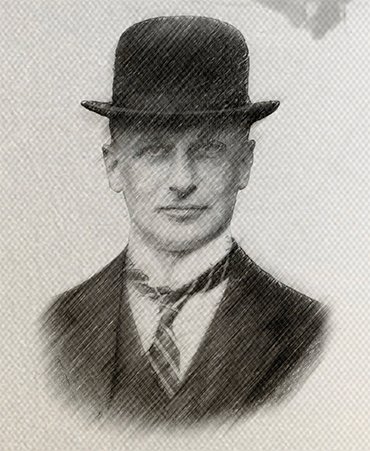 Advances in technology made it possible to formulate completely new tasks. This opportunity came with the development of aerostats, amazing flying vehicles, which immediately found a wide range of applications, both scientific and military. Before talking about the history of the Aeroarctic Society, it is worth noting that this organization did not come out of nowhere because it had had many predecessors, i. e., numerous aeronautical associations founded in different years. In the late 19th and early 20th centuries, the rapid development of aeronautics in Russia and in Europe was reflected in many dedicated societies and periodicals. By that time, there had been a rich history of scientific observations using unpowered vehicles such as balloons, probes, aerostats, etc.
Advances in technology made it possible to formulate completely new tasks. This opportunity came with the development of aerostats, amazing flying vehicles, which immediately found a wide range of applications, both scientific and military. Before talking about the history of the Aeroarctic Society, it is worth noting that this organization did not come out of nowhere because it had had many predecessors, i. e., numerous aeronautical associations founded in different years. In the late 19th and early 20th centuries, the rapid development of aeronautics in Russia and in Europe was reflected in many dedicated societies and periodicals. By that time, there had been a rich history of scientific observations using unpowered vehicles such as balloons, probes, aerostats, etc.
In 1894, initiated by the Russian inventor Mikhail Pomortsev, an international effort began to simultaneously launch Swedish, Russian and German aerostats with the participation of scientists–aeronauts for meteorological research in the free atmosphere. This project acquired new data and soon became commonplace. Then, this idea was implemented on a larger scale by founding the International Commission for Scientific Aeronautics in 1896. The commission united aeronautical organizations of different countries. The first chairman of the new institution was a German meteorologist Hugo Hergesell.
The Russian members of the commission were M. A. Rykachev, a hydrometeorologist, full member of the Imperial Academy of Sciences and the director of the Main Physical Observatory (since 1899, the Nikolaev Main Physical Observatory, St. Petersburg); M. M. Pomortsev; A. M. Kovan’ko, an inventor and aeronaut; and V. V. Kuznetsov, a physicist and researcher at the Main Physical Observatory. Now scientists from different countries could conduct regular meteorological observations in the free atmosphere, and from 1886 to 1896, there were 150 such airship expeditions in Russia, Germany, France and Sweden; the geography of aerostat ascensions was expanding steadily. The summer of 1907 saw a major enterprise organized by the International Commission for Scientific Aeronautics—simultaneous ascensions of balloons and kites at thirty-six sites in the Northern Hemisphere: in St. Petersburg, Moscow, Kiev, Baku, Omsk, Vladivostok, Manchester, Vienna, Zurich, Washington, Cairo, the Azores...
BIBLIOGRAPHY OF RUSSIAN AERONAUTICS Aeronautics was broadly covered by the Russian press. From 1880 to 1883, Colonel (Lieutenant-General for the Navy Department since 1887) P. A. Klinder was publishing (under his editorship) the first Russian aeronautical journal Vozdukhoplavatel’ (‘Aeronaut’), which led to a marked increase in the number of aeronautics enthusiasts. On January 1, 1881, N 16 of this journal published the first description of the project of the Russian airship by the inventor and designer of O. S. Kostovich.From 1903 to 1916, there was another journal under the same title. The publisher and editor of this monthly illustrated popular science and military journal was N. Ya. Stechkin. Since 1909, it was an official mouthpiece of the All-Russian Imperial Aero Club. In December 1896, at a regular board meeting of the Russian Technical Society, scientists decided to issue the journal Vozdukhoplavanie i issledovanie atmosfery (‘Aeronautics and Atmospheric Research’). One of the journal sections was devoted specifically to reports on meetings of European aeronautic societies. In 1911, there appeared a monthly journal Tekhnika vozdukhoplavaniya (‘Aeronautical Technique’); the publisher and editor of this journal was V. F. Naidenov, a military engineer and a teacher of descriptive geometry, mechanics, mathematics and aeronautics at the Nikolaev Engineering Academy and School.
There were also publications on the history of Russian aeronautics. For example, in 1856, Lieutenant-General K. I. Konstantinov, an artilleryman and an inventor in the fields of artillery, missile technology, instrumentation and automatics, published an article ‘‘Aeronautics’’ (in journal Morskoi sbornik N 8), and 1891, M. M. Pomortsev, the first Russian aerologist and an inventor in the field of missile technology, published his book Nauchnye rezul’taty 40 vozdushnykh puteshestvii, sdelannykh v Rossii (‘Scientific Results of 40 Aerial Voyages in Russia’), which was the first work to summarize the experience of upper air research.
Books on aeronautics were published in Russia since the middle of the 19th century; the flow of these publications was growing and their scientific value was increasing. More than one hundred such books were published in the last decade of the 19th century.
As early as in 1876, Dmitri Mendeleev wrote in the preface to the Russian translation of the meteorology course by the Norwegian scientist Henrik Mohn that balloon ascensions were very important for weather studies since they could help find answers to many questions. Indeed, with the development of scientific aeronautics, atmospheric studies became an important section of meteorology
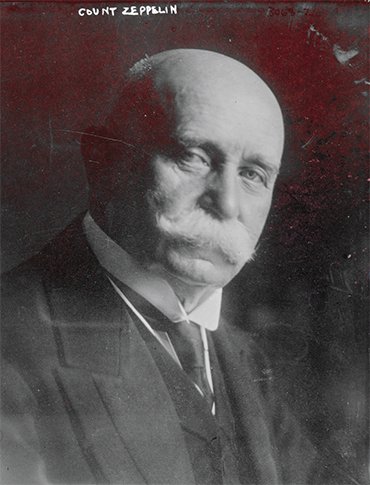 The success of the scientific campaign in 1907 led Prof. Hergesell, Director of the Aerological Observatory in Lindenburge, to the idea that the airship can be used in geographical as well as meteorological research. These events were later described by Leonid Breitfuß, a Russian/German hydrographer, hydrobiologist, direct participant of many events and, looking ahead, one of the most active members of the Aeroarctic Society (Breitfuß, 1928).
The success of the scientific campaign in 1907 led Prof. Hergesell, Director of the Aerological Observatory in Lindenburge, to the idea that the airship can be used in geographical as well as meteorological research. These events were later described by Leonid Breitfuß, a Russian/German hydrographer, hydrobiologist, direct participant of many events and, looking ahead, one of the most active members of the Aeroarctic Society (Breitfuß, 1928).
And then an amazing coincidence happened. In September 1908, the company Luftschiffbau ZEPPELIN GmbH, a manufacturer of dirigibles, was founded in Germany. Soon, in December of the same year, the company’s ownership was transferred to the Zeppelin Foundation, which was set up by Count Ferdinand von Zeppelin (1838–1917).
Here is a brief account of the preceding events. The first dirigible designed and built by a retired officer Ferdinand von Zeppelin and his assistants flew over Lake Constance (Bodensee) near Friedrichshafen as early as in 1900. Zeppelin’s original vision was to strengthen the German military power by using airships. However, a series of successful experiments was followed by an air crash that could have put an end to this branch of dirigibles. Zeppelin’s fourth dirigible LZ 4, in which he had invested all the money that was left, was destroyed by a sudden storm when it was marooned near Stuttgart. Without financial resources, it was impossible to continue the works... However, in just a few days, German citizens collected for Ferdinand von Zeppelin a huge amount of money, about six million marks, to support this initiative, which raised national sentiment and promised considerable benefits. Thus, the crash of the fourth Zeppelin airship proved to boost the business as it led to the foundation of the specialized company Luftschiffbau ZEPPELIN GmbH and the Zeppelin Foundation. The idea proposed by Prof. Hergesell was opening new vistas for airships...
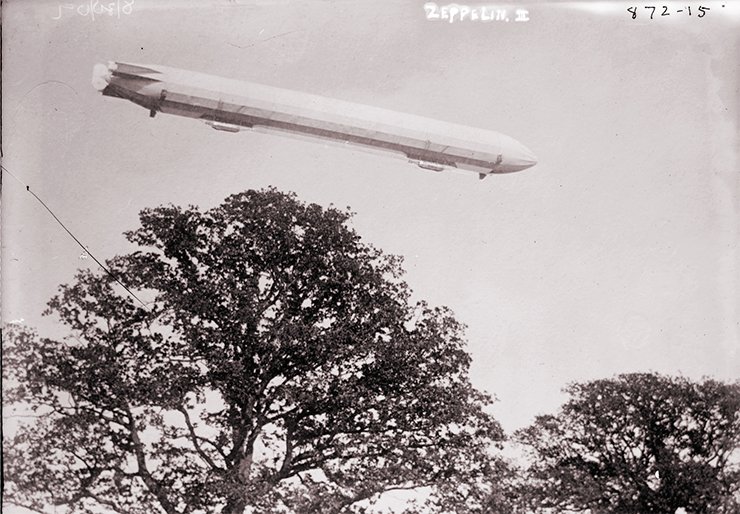
For a few months, leading experts—geographers, meteorologists, aerologists, mariners and travelers—were exchanging ideas on the use of airships for geographical research to reach a conclusion that one should attempt to fly over the Arctic space.
Scientists of that time did not think of reaching the North Pole as an end in itself. Without studying the astronomy, biology, geology, meteorology, oceanography and other components of the polar nature, it would have been only a sports achievement.
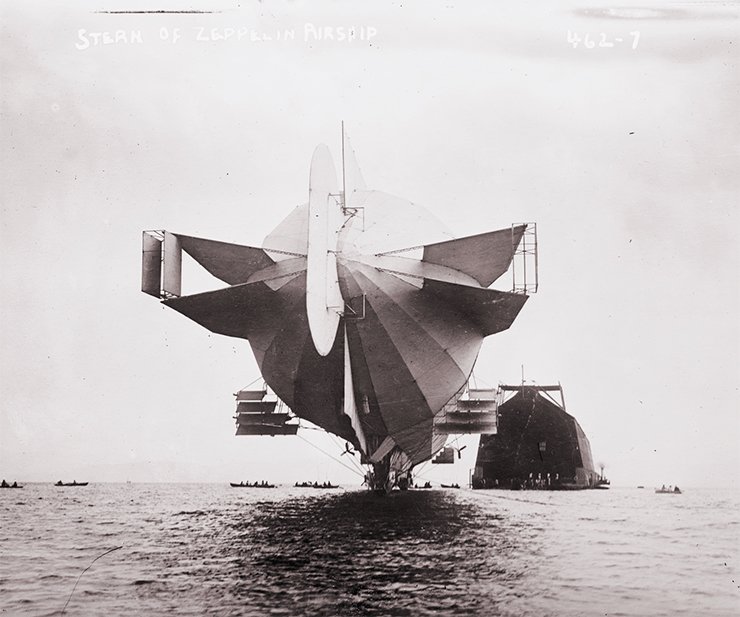
Here it is worth recalling that the idea of reaching the pole in a balloon was put forward as early as in 1845 by a French aeronaut Jules François Dupuis-Delcourt (1802–1864). The first airship was also built in France: a spindle-shaped aerostat 44 m in length with a steam engine rose in the sky on September 24, 1852 in Versailles. Navigated by Henri-Jacques Girard, a former railway worker, the aerostat flew a considerable distance, 31 km. However, it was much later that one dared to use such a vehicle to explore the uncharted polar space although the benefits of airships had been apparent for many Arctic explorers. “Hence the employment of a balloon would be of the last importance in Arctic navigation. The advantage of being able to ascend from the ship in a balloon secured by a rope, to the height of a few hundred feet is self-evident; and, undoubtedly, the first vessel which avails herself of this great resource will derive extraordinary benefit from it,” wrote Julius von Payer in 1876 (New Lands Within the Arctic Circle, New York: Cambridge University Press, 2012). Julius von Payer (1842–1915) was the head of the Austro–Hungarian North Polar Expedition in 1872–1874, which made the discovery of Franz Josef Land.
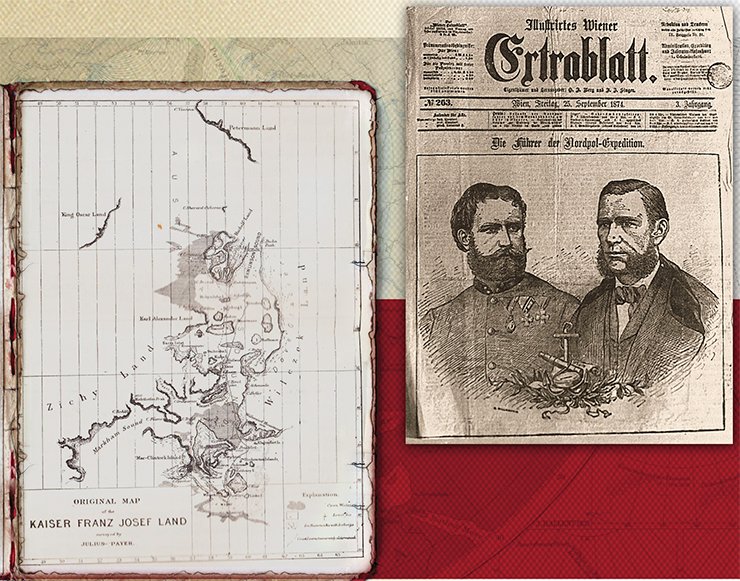
The idea to use aerostats of various designs to explore the polar regions had been in the air since the 1870s. Researchers and travelers from different countries had put forward a lot of adequate projects, which, however, were not implemented, either due to a lack of funds or for other reasons. Eventually, there appeared an expedition project closest to our storyline; the project was proposed by Salomon August Andrée (1854–1897).
To the Arctic in a balloon
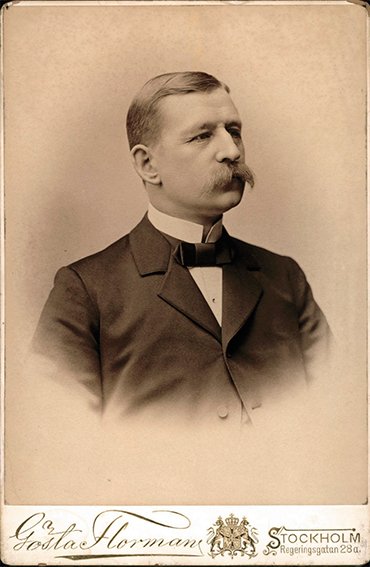 A Swedish polar explorer, physicist and engineer Salomon Andrée put forward a plan to reach the North Pole in a balloon navigated by a system of sails and guide-ropes and make scientific (meteorological, geomagnetic, geographical, etc.) observations along the way.
A Swedish polar explorer, physicist and engineer Salomon Andrée put forward a plan to reach the North Pole in a balloon navigated by a system of sails and guide-ropes and make scientific (meteorological, geomagnetic, geographical, etc.) observations along the way.
Andrée first presented his project at a meeting of the Royal Swedish Academy of Sciences on February 13, 1895 and then, on February 15 of the same year, at the Swedish Geographical Society. The project was also examined at the French Academy of Sciences, at the Paris Ballooning Society and at the Fourth International Geographical Congress in London. All these reputable organizations and conferences endorsed Andrée’s idea. One of his supporters was Nils Adolf Erik Nordenskiöld (1832–1901), a well-known expert in the northern polar space.
In the same year 1895, the St. Petersburg journal Meteorologicheskii Vestnik published Andrée’s report (sent by the author himself) about his plan to fly to the North Pole in a balloon. Some scholars and experts pointed out that Andrée’s team lacked experience, and there were doubts about their technical capabilities; nevertheless, the decision was made. The expedition was equipped and financed under the auspices of outstanding people of Sweden—King Oscar II, an engineer and chemist (who later established the Nobel Prize), and Baron Oscar Dickson, an industrialist, philanthropist and enthusiast of Arctic exploration.
On July 11, 1897, the balloon Örnen (The Eagle) with the project participants physicist Nils Strindberg, engineer Knut Frænkel and expedition leader Salomon Andrée on board was launched with a fair wind from Svalbard.
On July 14, the balloon, which had grown much heavier from fog and rain, landed on ice, and the participants headed back on foot, trying to make meteorological and other scientific observations along the way... October 17, as it turned out later, was the date of the last entry in Strindberg’s calendar almanac.
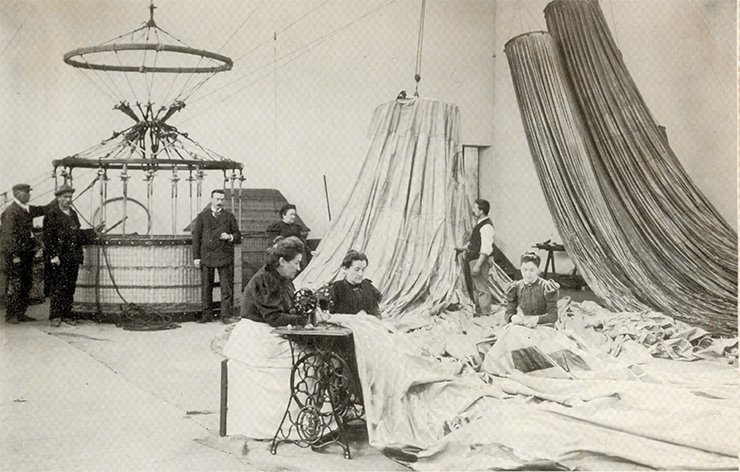
Nothing had been known about the travelers’ fate for many years. The last expedition camp was discovered only 33 years later, on August 6, 1930, by the crew of the Norwegian ship Brattvag; until then everyone thought them missing. “Andrée was the first to find his way into the Arctic by an air vehicle; he made his flight when steerable aeronautics was in its infancy,” wrote years later the hydrographer, oceanographer and polar explorer Vladimir Wiese. However, at the end of the 19th century, the tragic finale of Andrée’s expedition led many people, even those who had supported him, to believe that such travel and research were impossible.
Second attempt
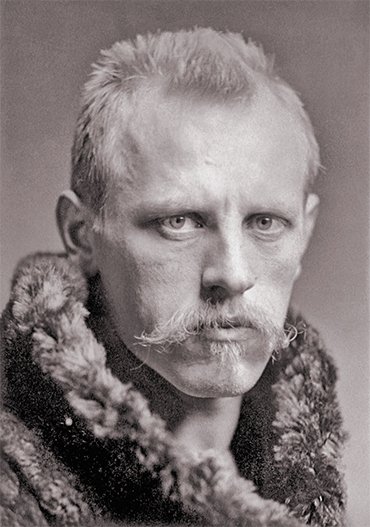 Let us now return to our main storyline, i. e., the implementation of Hergesell’s plan to use the airship for scientific research in the field of geography. Here we cannot but draw obvious parallels. The heated debate in the press and scientific community about the fate of the expedition that went missing a decade before Hergesell came forward with his idea was still fresh in the mind of those who had to support virtually the same mission as that attempted by Andrée. Here a great role was played by the enthusiastic support from the world’s most reputable expert—the Norwegian polar explorer Fridtjof Wedel-Jarlsberg Nansen (1861–1930), who believed that the airship could provide a solution to many problems in meteorology, hydrography and physical geography of the Arctic. In 1909, he wrote to Professor Hergesell that travel with airships would give tremendous results for geographic exploration even without landings. Airship voyages would show the distribution of land and sea quite accurately and allow geographers to draw important conclusions about the topography of the still unknown part of the polar region, which was of great importance for understanding the circulation of the hydro- and aerosphere. Nansen’s work about the Norwegian Sea,* which was written together with Helland-Hansen, showed how much importance Nansen attached to this issue. At that time one only could guess what was there in the unknown regions. During airship voyages, explorers could study the distribution and composition of the ice surface in the Arctic basin, and this evidence was also important for understanding the sea circulation. If the airship could make landings on ice in different places and stay in one place for a few hours in one place, one could make valuable oceanographic observations such as depth sounding, collecting sea water samples and measuring water temperature at various depths. In addition, valuable information would be obtained about the polar atmosphere in different layers (adapted from Breitfuß, 1928).
Let us now return to our main storyline, i. e., the implementation of Hergesell’s plan to use the airship for scientific research in the field of geography. Here we cannot but draw obvious parallels. The heated debate in the press and scientific community about the fate of the expedition that went missing a decade before Hergesell came forward with his idea was still fresh in the mind of those who had to support virtually the same mission as that attempted by Andrée. Here a great role was played by the enthusiastic support from the world’s most reputable expert—the Norwegian polar explorer Fridtjof Wedel-Jarlsberg Nansen (1861–1930), who believed that the airship could provide a solution to many problems in meteorology, hydrography and physical geography of the Arctic. In 1909, he wrote to Professor Hergesell that travel with airships would give tremendous results for geographic exploration even without landings. Airship voyages would show the distribution of land and sea quite accurately and allow geographers to draw important conclusions about the topography of the still unknown part of the polar region, which was of great importance for understanding the circulation of the hydro- and aerosphere. Nansen’s work about the Norwegian Sea,* which was written together with Helland-Hansen, showed how much importance Nansen attached to this issue. At that time one only could guess what was there in the unknown regions. During airship voyages, explorers could study the distribution and composition of the ice surface in the Arctic basin, and this evidence was also important for understanding the sea circulation. If the airship could make landings on ice in different places and stay in one place for a few hours in one place, one could make valuable oceanographic observations such as depth sounding, collecting sea water samples and measuring water temperature at various depths. In addition, valuable information would be obtained about the polar atmosphere in different layers (adapted from Breitfuß, 1928).
To assess the feasibility of such a project, a small expedition with Prof. Hergesell himself set off in the summer of 1910 to Svalbard, which was still no man’s land and had a history of balloon ascensions. The participation of Ferdinand von Zeppelin, the designer, suggested that the intention was clear: it was planned to use an aerostat with an engine, i. e., a dirigible...
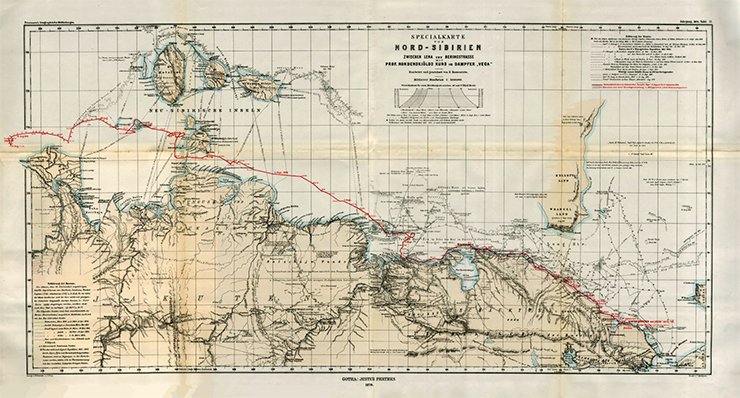
It seemed to experts in the field that polar lands were likely to be the best place for airships; one only needed to improve the latter so that they could withstand strong winds and make non-stop flights lasting a few days.
One member of the expedition was Adolf Miethe (1862–1927), a prominent scientist and one of the pioneers of color photography. Here, in Svalbard, he also took photographs for scientific purposes. A year later, a geophysical station was set up in the harbor of Ebeltoft; over the next two years, the station staff made meteorological observations to determine the conditions for air navigation.
The outbreak of the First World War put a crimp in the research. Although these works gave additional impetus to the development of airship engineering in Germany, the greatest contribution came from the military operations: the German armed forces used zeppelins in reconnaissance and bombing. By the beginning of the First World War, the company Luftschiffbau ZEPPELIN GmbH had built several dirigibles 148 m in length, which could reach speeds up to 80 km/h. Overall, from 1900 to 1916, German engineers made 176 aerostats of different designs, of which 123 were built during the First World War. The overwhelming majority of these airships—from LZ 26 to LZ 119—were manufactured by Ferdinand von Zeppelin’s firm. His name became a generic term for these airships...
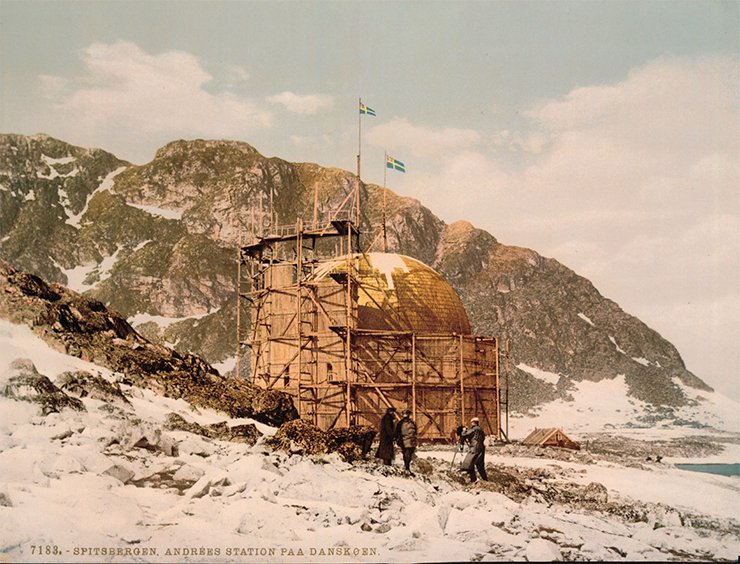
On November 11, 1918, the First World War ended with the Armistice of Compiegne, which meant the surrender of Germany. From that time on, a lot was riding on international regulation of aeronautics, and legal issues had an impact on the further development of airship engineering.
By the decision of the Supreme War Council of the winning countries, a commission was established in 1918 to continue the works on international air law code that were initiated at the conference in Paris in 1910. That conference reached no result because one of the participant countries—the United Kingdom—refused to sign the Convention draft of 55 articles. In 1913, there was another attempt to regulate air navigation, at least between two countries—Germany and France, but the outbreak of hostilities nullified the agreements.
Then, right after the end of the First World War, it was again not the best time for finding solutions to international legal issues: the articles of the agreement clearly reflected the division of states into winners and losers. Germany, the defeated party, was forced to pay reparations, including with zeppelins. Moreover, under the terms of the Treaty of Versailles on June 28, 1919, Germany was forbidden to have many of the modern weapons, particularly combat aircraft, and, therefore, produce airships that could be used both for military and peaceful purposes.
In addition, the treaty contained articles giving the aircraft of the winners the right to fly over the entire territory of the defeated countries: the Treaty of Versailles gave the aircraft of the winners for a five-year period “full liberty of passage and landing over and in the territory and territorial waters of Germany” (Article 313) and “the right of flying over the territory and territorial waters of Germany without landing” while in transit to any foreign country (Article 314). The military aircraft of the winners had the right to fly over the German territory during the whole period of military occupation of a part of the German territory. The draft Convention was drawn up in 1919 and was adopted by the states on October 13 of the same year (Grabar, 1927).

Here, we again meet with Walter Bruns. In January 1919, Bruns, a former captain of an airship and military intelligence officer, spoke at a meeting of the Society of Naturalists in Görlitz about the possibility of airship-based transarctic communication between Europe and the Pacific (Breitfuß, 1928).
The proposed route was mapped through two cities of the Soviet Russia—Arkhangelsk and Petrograd—and involved organizing passenger and freight traffic as well as postal communication. Even without an access to the whole array of the archival documents, it is possible to infer when and how this project was drawn up.
Most likely, this project appeared, in the first place, because Bruns was seeking an opportunity to apply his knowledge and skills: like many professionals, he found himself on the sidelines even before the signing of the Treaty of Versailles.
The project might also have been influenced by Bruns’s membership in the German Society for East European Studies (Deutsche Gesellschaft zum Studium Osteuropas). Founded in 1913 in Berlin, at the initiative of the social historian Otto Hoetzsch, the society was originally called the German Society for Russian Studies (Deutsche Gesellschaft zum Studium Russlands). Its goals and objectives were science oriented, but politicians can often tailor scientific thought for their purposes.
This society was given much weight in Germany: there were more than a hundred delegates at the founding meeting, including representatives of the Government and Ministries of Trade, Finance and Foreign Affairs, Reichswehr officers, the entire corpus of the German Embassy in Moscow, the Prussian Minister Friedrich Schmidt-Ott (1860–1956) as well as scientists from different fields of knowledge. The first president of the society was Count Hermann von Hatzfeld. The society existed only from the autumn of 1913 to the summer of 1914; Otto Hoetzsch and his colleagues managed to revive it only in July 1918 under a new name, the German Society for East European Studies (Deutsche Gesellschaft zum Studium Osteuropas); today this society is called Deutsche Gesellschaft für Osteuropakunde.
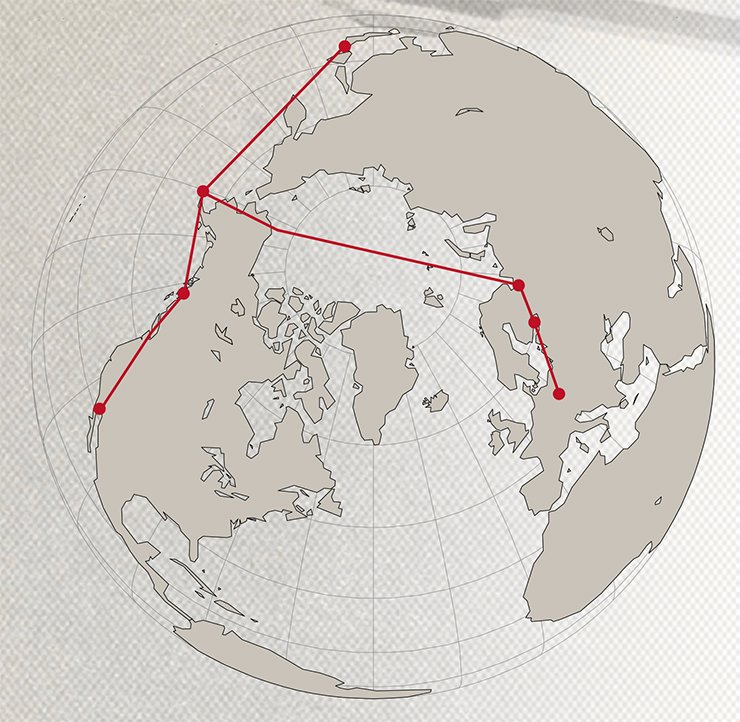
Bruns made preliminary calculations, which showed that a trip, e. g., from London via Petrograd–Arkhangelsk–the polar region–Nome (Alaska)–the Unimak Island (Aleutian Islands) and then to Yokohama (Japan) or San Francisco could be made within no more than 7 days. However, the calculations considered only the aircraft’s technical capabilities, and Bruns was aware that the project could be implemented only after an assessment by geographers, meteorologists and aeronauts.
A special commission was established to evaluate the project. Its chairman was Prof. Ernst Kohlschütter, an astronomer and geodesist, the director of the Geodetic Institute in Potsdam. The commission concluded that the project was generally acceptable; it was only necessary to determine the weather conditions in the Arctic and ascertain the capabilities of modern airships.
It was extremely important to explore the northern polar region for the needs of synoptic meteorology as well as for the development of the proposed transarctic line, because there were still a lot of blank spots on the maps. Extensive discussions and preparatory works with the participation of experts (e. g., the engineering aspects of the project were evaluated by the famous airship designer, Chairman of the German Aeronautical Society, Prof. Johann Schütte) led to positive conclusions.
Thus, the project split up into two major tasks: the use of airships for scientific research in the Arctic and the organization of transport over long distances in a yet unchartered direction. The project was considered mainly from these points of view. Although the project had a theoretical grounding, it could not be implemented in Germany because of the prohibition to build large airships...
Journey over the pole
On October 7, 1924, in Berlin, there was a meeting with the participation of Prof. Fridtjof Nansen, which was also attended by the former Prussian Minister, Prof. Friedrich Schmidt-Ott, the Chairman the German Association for the Support and Advancement of Scientific Research (Deutsche Gemeinschaft zur Erhaltung und Förderung der Forschung), established in October 1920. At this meeting, the commission created to evaluate Bruns’s project was transformed into the International Society for the Exploration of the Arctic Regions by Means of the Airship (Internationale Gesellschaft zur Erforschung der Arktik mit Luftfahrzeugen), or the Aeroarctic. Here we can draw parallels with the Polar Commission of the Academy of Sciences in Russia, when an agency established to address the exploration of the recently discovered Emperor Nicholas II Land was transformed into a commission entrusted with the coordination of all research in the polar region.
Professor Nansen was elected chairman of the Aeroarctic, and Captain Bruns became the secretary general. The figure of Nansen, the winner of the Nobel Peace Prize in 1922, was extremely important not only because it gave weight to the society in the scientific community but also as an indication that it was a peace project rather than an illegal revival of the German aviation forbidden after the First World War. The preliminary work of the commission was detailed in a memorandum entitled Das Luftschiff als Forschungsmittel in der Arctis. Eine Denkschrift von Internat. Studiengesellschaft für Erforschung der Arctis mit dem Luftschiff (Berlin, 1924) (The Airship as a Means of Arctic Exploration. Memorandum of the International Society for the Exploration of the Arctic Regions by Means of the Airship).

This event was also covered by the Soviet press. For example, journal Samolet N 10 published an article about the international society for the exploration of polar regions, which was recently founded in Europe and headed by the most prominent scientists from different countries, including from the Soviet Union (Bobrov, 1924).
A week after the Aeroarctic was established, there was another event that added popularity to the new society. It was the successful flight of the German aircraft designer and aeronaut Hugo Eckener (1868–1954) aboard the LZ 126 zeppelin from Friedrichshafen to New York.
The history of this flight was as follows. An ardent opponent of airships, Eckener, published, after the accident with the LZ 4 zeppelin in 1908 (see above), another critical article listing her shortcomings. After that, he was approached by Count Zeppelin himself, who offered him to work together on improving the airship. As early as in 1910, Eckener was promoted to captain of the airship and flight manager at the Zeppelin joint-stock company.
In 1914, with the outbreak of the First World War, he applied to join the Air Force and operate a combat airship. Instead, Eckener was appointed an instructor at the flight school in Nordholz, where he served until the end of the war. In 1917, after von Zeppelin’s death, Eckener became head of Luftschiffbau ZEPPELIN GmbH. But it was almost impossible to work: under the terms of the peace treaty, Germany was forbidden to build large airships...
However, Eckener found a way out, and soon, in 1920, he began negotiations with the US Navy about building an airship for the US Army and offered to give them the new airship if the United States waived the reparations (3.2 million marks in gold). The agreement was reached in 1921; the construction of the LZ 126 (ZR III) airship began as early as in 1922 and ended in September 1924. According to the agreement, Luftschiffbau ZEPPELIN GmbH was to deliver the airship to the United States. Eckener decided to navigate her himself. The LZ 126 airship ascended on October 12, 1924 and landed safely in Lakehurst on October 15, having flown over New York. The airship was named Los Angeles and enlisted in the US Navy.
This flight convinced the world of the reliability of this transport. The Aeroarctic Society was becoming better known in many countries, including the Soviet Russia, where the government as well as academia treated Bruns’s project of transarctic air traffic by airship quite seriously (Breitfuß, 1928).
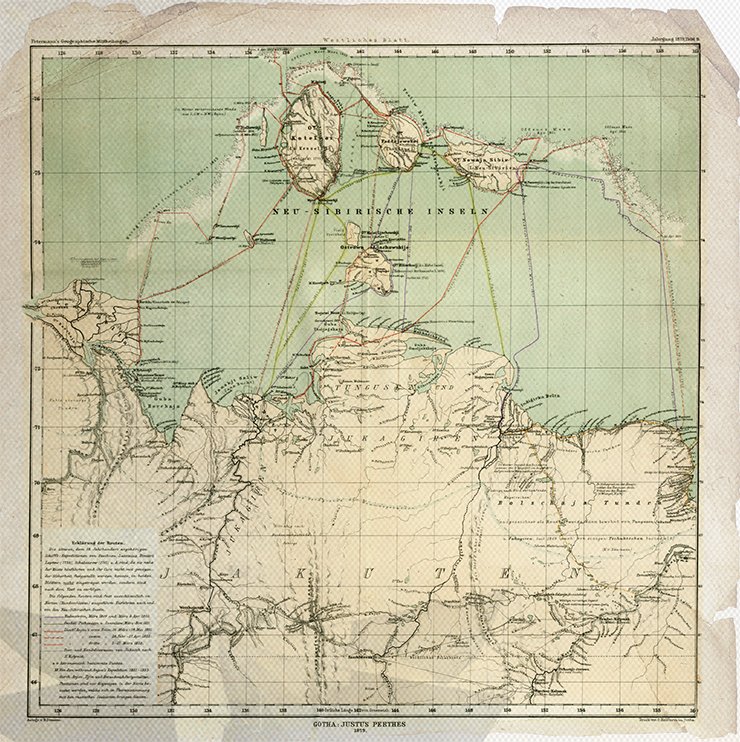
In fact, almost immediately after the meeting at which the Aeroarctic was founded, the project, which was presented by Bruns as early as in 1919 in Görlitz, was submitted in an extended form to the Soviet Government and sent for consideration to the Polar Commission of the Academy of Sciences. It should be recalled that the Permanent Polar Commission (Polar Commission, or PC), which was established under the Academy of Sciences in 1914 and entrusted with the coordination of all research in the Russian Arctic, not only had not lost its importance after the events of 1917 but also acquired new functions. Thus, in the mid-1920s, Gosplan gave it the authority to evaluate all the projects of all expeditions to explore the Soviet sector of the Arctic, no matter where they came from, both domestic and foreign, and to decide on their feasibility. The commission’s meetings to discuss individual projects were conducted in secrecy, and the materials and conclusions of the Polar Commission went directly to the national government.
The project presented by the Secretary General of the Aeroarctic Society Walter Bruns to the USSR Academy of Sciences differed only slightly from that reported in 1919 in Görlitz and suggested a transarctic flight by airship along the route Amsterdam—Leningrad—Arkhangelsk—the mouths of the Ob and Lena Rivers—the Bering Strait—Unimak Island—Vancouver and San Francisco or Yokohama. Now the route started in Amsterdam, not London, and finished in Yokohama or San Francisco.
The only fundamental difference from the original project was that the new one included a survey flight that ran mostly above the northern coast of the Soviet Union. This was an exploratory expedition, which was to fly over the yet unexplored Emperor Nicholas II Land. The purpose of the flight was the same, i. e., to investigate the possibility of passenger transport between distant locations that can be reached only by crossing the predominantly lowland areas of the Arctic (the altitude and temperature changes associated with flights over hilly and mountainous lands are detrimental to airships). The project calculations showed that the entire route (13,000–14,000 km) could be covered in 6–7 days, whereas it took 35 days to get from Europe to Yokohama by non-airship high-class vehicles of that time. It was believed that the project would help organize passenger transport and postal communication and the airship would become the core of the air fleet.
* By the Norwegian Sea Nansen meant a part of the Atlantic Ocean between Norway, Svalbard, the Jan Mayen Island, Iceland and the Faroe and Shetland Islands
References
Breitfuß, L. Das Nordpolargebiet. Seine Natur, Bedeutung und Erforschung. Berlin: Springer-Verlag, 1943.
Chernov, A. A. Puteshestviya na vozdushnom share (Voyages in a Balloon). Leningrad: Gidrometeoizdat, 1975 [in Russian].
Grabar’ V. E. History of air law, in: Voprosy vozdushnogo prava (Air Law Issues). Proc. Air Law Section, Aviakhim USSR and Aviakhim RSFSR. N 1. Ed. by P. I. Baranov, V. A. Zarzar, Prof. E. A. Korovin, V. L. Lakhtin, and Prof. A. V. Sabanin. Moscow: Aviakhim, 1927 [in Russian].
Lüdecke C. Die Deutsche Polarforschung seit der Jahrhundertwende und der Einfluß Erich von Drygalskis. // Ber. Polarforsch. 158. (1995). S. 125; S. Barr, C. Lüdecke, editors. The History of the International Polar Years (IPYs), Springer, 2010. P. 139—140.
Miethe A., Hergesell H. Mit Zeppelin nach Schpitzbergen. Berlin, 1911.


